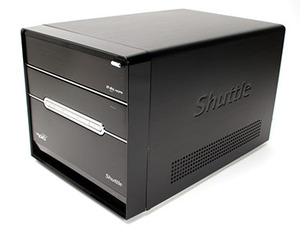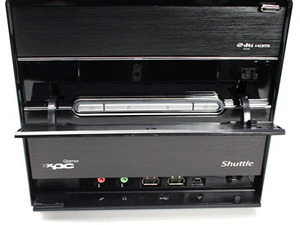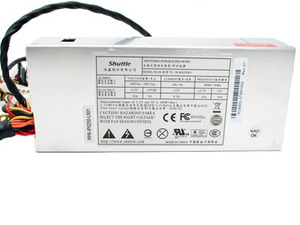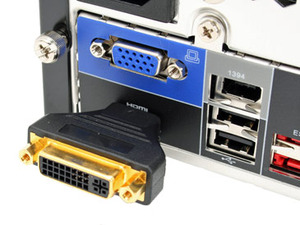Outside looking In
The externals are a lovely affair, although yet again Shuttle has chosen to paint aluminium rather than anodise it. The front looks like nice brushed aluminium and feels like it too, but underneath it's actually just covered plastic. All of it seems to suck the prints off your fingers regardless of finish.Mind you, it still looks fantastic and the G5 has always been a personal favourite of mine – the sleek chrome lines intermingled with the stealthed drives and front panel work exceptionally well in my opinion. The optical drive eject button is adjustable for all variety of drives and the second panel pops down at a push to reveal a single 3.5" external bay – a space where a hard drive can be used if needed.
The bottom also drops down to reveal a pair of USB 2.0 ports, a 4-pin Firewire and 3.5mm audio connections for a stereo headphone and microphone. While there's a raised bit of plastic at the end for a fingerprint reader, that bit of kit is saved for the premium G6 model instead.
The sides feature the usual embossed Shuttle logo and unfiltered grills for ventilation, but because of their low placement you should be wary of running this machine on the carpet for fear of it filling up with dust.
At the back there's a large 92mm fan that squeezes the slim SilentX PSU with its twin 40mm fans to one side (one fan front and back). Despite the implication in the name, it's far from it and the two little fans instantly whir up to provide some adequate airflow. There have been mods to cut a 60mm fan into the inside-side instead, which certainly quieten things down, but you take the risk of it working long term and obviously you're voiding your warranty. There's plenty of space to do this though.
There's an optical S/PDIF out on its own up the top, over both full height expansion slots, and by that is the rear I/O. Between them though is a little nondescript hole that houses the clear CMOS button for which you'll need a biro to get to.
The HDMI adapter is gold plated and works exceptionally well, as shown above. Having said that though, because of the HDMI socket’s design, it is a touch flimsy – that’s nothing new.

MSI MPG Velox 100R Chassis Review
October 14 2021 | 15:04













Want to comment? Please log in.